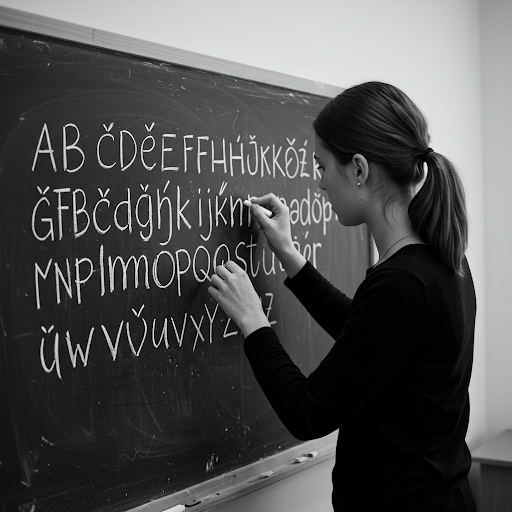
Decoding Hungarian Spelling: A Beginner's Guide
Share
Decoding Hungarian Spelling: A Beginner's Guide
Embarking on the journey of learning Hungarian? One of the first hurdles you might encounter is Hungarian spelling. While it might seem daunting at first, understanding the basic principles can make a world of difference. This guide offers a simplified introduction to Hungarian spelling, focusing on essential elements to get you started. We won't delve into complex grammar, but rather focus on the building blocks of written Hungarian.
The Hungarian Alphabet: A First Look
The Hungarian alphabet is based on the Latin script but includes some additional letters and accents to represent the unique sounds of the language. It's crucial to familiarize yourself with these additions early on.
Here's a look at the Hungarian alphabet:
A á B C cs D dz Dzs E é F G gy H i í J k ky L ly M N ny O ó Ö ő P Q R S sz T ty U ú Ü ü V W X Y Z zs
Notice the presence of accented vowels (á, é, í, ó, ö, ő, ú, ü) and some consonant combinations (cs, dz, dzs, gy, ly, ny, sz, ty, zs). These represent distinct sounds and are essential for correct pronunciation and spelling.
Pronunciation Tips for Hungarian Spelling
Hungarian pronunciation is generally quite phonetic, meaning that words are pronounced much as they are spelled. However, some sounds may be unfamiliar to English speakers.
- Vowel Length: The difference between short and long vowels is crucial in Hungarian. "a" and "á" represent different sounds, as do "o" and "ó," "e" and "é," and so on. Pay close attention to these differences, as they can change the meaning of a word.
- Consonant Combinations: The consonant combinations (cs, dz, dzs, gy, ly, ny, sz, ty, zs) represent single sounds. For example, "cs" is pronounced like the "ch" in "church," and "gy" is similar to the "dj" sound in "adjust."
- Vowel Harmony: While not directly related to spelling, vowel harmony is important for understanding word formation. Vowels within a word often belong to a certain group (front or back), which influences the choice of suffixes.
- Stress: In Hungarian, the stress falls on the first syllable of a word.
Common Hungarian Spelling Patterns
While Hungarian spelling is relatively straightforward, some patterns are worth noting:
- Double Consonants: Double consonants (e.g., "ss," "ll," "nn") indicate that the consonant sound is longer.
- -ly and -ny: These combinations represent single consonant sounds. "-ly" is often compared to the "y" in "yes," and "-ny" is similar to the "gn" in "cognac."
- -sz and -zs: These represent distinct sibilant sounds. "-sz" is like the "s" in "sand," and "-zs" is like the "s" in "measure."
Tips for Improving Hungarian Spelling
Here are some practical tips to help you improve your Hungarian spelling:
- Practice Regularly: Consistent practice is key to mastering any language. Write simple sentences, copy texts, and try dictation exercises.
- Listen Carefully: Pay close attention to how native speakers pronounce words. This will help you associate the correct sounds with the written form.
- Use Resources: Take advantage of online dictionaries, language learning apps, and textbooks. These resources can provide valuable support and guidance.
- Read Hungarian Texts: Reading Hungarian books, articles, and websites will expose you to correct spelling and grammar in context.
- Don't Be Afraid to Ask: If you're unsure about the spelling of a word, don't hesitate to ask a native speaker or consult a reliable resource.
Simple Hungarian Words and Their Spelling
Let's look at some basic Hungarian words and their spelling:
- hello - szia (informal), jó napot (formal)
- goodbye - viszlát
- thank you - köszönöm
- please - kérem
- yes - igen
- no - nem
- water - víz
- bread - kenyér
- milk - tej
- one - egy
- two - kettő
- three - három
Resources for Learning Hungarian Spelling
Here are some helpful resources to further your Hungarian spelling journey:
- Welcome to your Consultation! – Learn Hungarian Anywhere
- Struggling with grammar? – Learn Hungarian Anywhere
- How to Learn Hungarian Blog – Learn Hungarian Anywhere
Hungarian Spelling and Pronunciation: A Combined Approach
Remember, spelling and pronunciation are closely intertwined. Improving your pronunciation will naturally enhance your spelling skills, and vice versa. Focus on both aspects of the language to achieve fluency.
Conclusion
Learning Hungarian spelling might seem challenging at first, but with consistent effort and the right resources, you can make significant progress. Start with the basics, practice regularly, and don't be afraid to make mistakes. Embrace the journey and enjoy the process of discovering this fascinating language!
